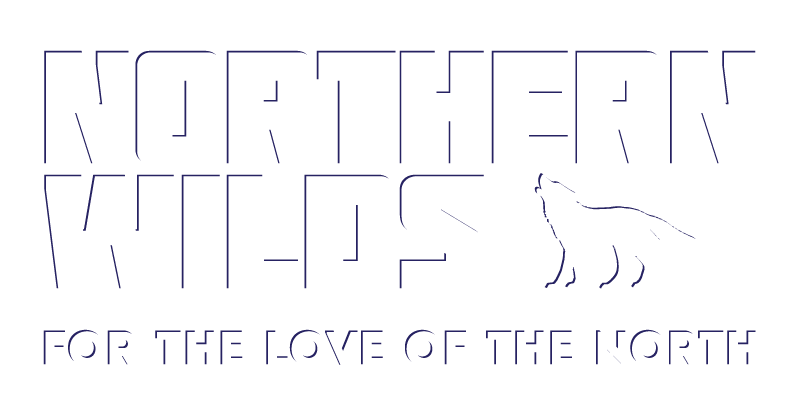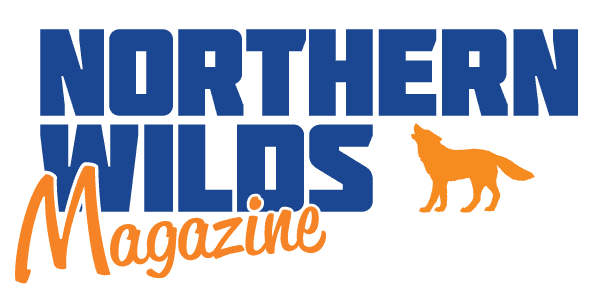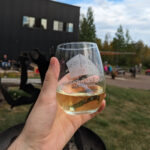For many of us, when we think of butterflies, monarchs come to mind. Their vibrant-orange wings divided by thin black lines resemble tiny stained-glass windows. Every time I see one sip nectar or fly by, my heart flutters. I cringe at the thought that monarchs may become extinct. Unfortunately, many pollinators are in trouble.
Since the late 1990s, it’s estimated the monarch population has dropped by 90 percent, and worldwide, an estimated 20,000 species of bees also have declining numbers. The destiny of monarchs and other pollinating insects are inextricably linked together. Loss of habitat, pesticides, herbicides, disease, and changing weather patterns all play a role in their decline. According to the United States Department of Agriculture, 80 percent of the 1,400 crop plants grown in the world need pollination. Globally, pollinators contribute an annual value of more than 3 trillion dollars for their pollination services. In the U.S. the annual figure is 10 billion. And pollinators never collect a paycheck.
Monarchs play only a small role in pollination compared to bees, but organizations working to save pollinators have chosen the iconic orange-and-black butterfly to symbolize the conservation of all pollinators. Monarchs are beautiful, easily recognized, and prevalent throughout the United States.
Fortunately, many communities are working together to increase viable, healthy habitats for monarchs and other pollinators. The even better news? Individuals, by sharing a part of their yard, can help too. Organizations, like the Duluth Monarch Buddies (DMB), work with people who wish to create pollinator gardens.

DMB is a nonprofit organization established in 2015 by Tom Uecker. When Uecker was a child, he raised a monarch butterfly from a caterpillar, an experience he never forgot. For 35 years, Uecker worked as a teacher, and he shared his enthusiasm for monarchs with both elementary and secondary students. In the late summer, he would look for monarch eggs, caterpillars, and chrysalides to bring into the classroom each fall. His students would nurture the fourth-generation monarchs, which were destined to migrate to Mexico for the winter. Each day the students provided the caterpillars with a new milkweed leaf and cleaned the frass (waste) out of their cups. After the monarchs emerged from their chrysalides and became strong enough to take flight, his students released them.
Uecker and fellow DMB members serve as enthusiastic ambassadors for monarchs and other pollinators, giving educational talks to students and adults at schools, community centers, parks, churches, garden clubs, senior centers, and the zoo. They provide information and support to people who wish to create pollinator waystations.
In 2025, the DMB will hold two main events for the public. First, on Saturday, June 7, from 10 a.m. to 1 p.m., they will host their Monarch Festival at the First United Methodist Church (230 E. Skyline Parkway, Duluth). The event is free. At 10:30 a.m. Alex Carroll, Monarch Joint Venture’s Midwest Science Coordinator, will give a keynote speech about the use of drones to survey and evaluate milkweed habitats for monarchs. Attendees can watch a drone demonstration.
Shoreview Natives, a plant nursery based in Two Harbors, will sell locally grown plants that are native to Northern Minnesota. Their plants do not contain pesticides or neonicotinoids, which have been linked to adverse impacts on bees and other pollinators. Native plants are naturally resilient to drought, diseases, and pests, making them low maintenance.

Additionally, the festival will feature children’s activities, short monarch movies and popcorn, local environmental groups, and monarch eggs, caterpillars, and butterflies. While planting a pollinator garden isn’t complicated, it’s a good idea to learn about the process. People who attend the festival can pick up free milkweed seeds, gather advice about pollinator gardens, and learn about the importance of pollinators in our world.
DMB’s second event, the Monarch Waystation Garden Tour, will be held Saturday, August 2, from 10 a.m. to 1 p.m. A self-driving tour, it features six to seven waystations. The cost is $10. Tour pamphlets can be purchased in the parking lot of the First United Methodist Church (230 E. Skyline Parkway, Duluth).
Featured every year, the Lakewalk Pollinator Garden on London Road and 26th Avenue East is a good place to start the tour. Designed in 2018, this waystation was developed as a collaboration among DMB, Shoreview Natives, Friends of the Lakewalk, and Pheasants Forever. Uecker said that the DMB thought it would be nice to have a waystation at this location because it’s the terminus of Interstate-35, which begins in Laredo, Texas, and has been designated the “Monarch Highway.”
Uecker describes I-35 as “a big funnel” with monarchs coming north along the highway corridor in the spring and returning south along it to Mexico in the fall, where they winter over. Minnesota, Iowa, Missouri, Kansas, Oklahoma, and Texas work together to provide quality habitats for monarchs and other pollinators along I-35.

Uecker hosted the Lakewalk Pollinator Garden in 2024. He loves to answer questions about the plants and pollinators visitors see. Last year people who stopped by had an opportunity to release a recently hatched monarch. Uecker plans to host the Lakewalk Garden in 2025. While the Lakewalk Garden is always on the tour, the privately-owned gardens featured each year change, with the participants revealed on the morning of the tour.
Pollinator gardens—planted to function as habitats and feeding stations—look different from more traditional gardens, but they are just as beautiful. Because some pollinators are specialists, and only gather nectar from certain flowers, different species of flowers are often mixed together to attract a greater variety of pollinators. Also, instead of planting only one or two plants of the same species, gardeners will plant an abundance of a species in the same area, which allows pollinators to feed and conserve energy.
Milkweed is part of every pollinator garden, and despite its name, it’s not a weed. It’s essential for the survival of monarchs. Female monarchs only lay their eggs on the underside of milkweed leaves, and their caterpillars only eat milkweed leaves. Gardeners should select pesticide-free milkweed that is native to the Northland, such as common milkweed, butterfly weed, and swamp milkweed. Tropical milkweed, which isn’t native to our area, should never be used. It’s home to a parasite, which can infect monarchs causing them to die after emerging from their chrysalides.
The Waystation Tour provides a great opportunity to ask other gardeners for advice. Do you have an area of your lawn where grass won’t grow? One gardener I visited planted purple yarrow, smooth oxeyes, and common milkweed—all sun-loving, native plants—along her boulevard. Now, a row of elegant flowers grows in a place that once contained dead grass and weeds.

Perhaps you have a wet area in your yard due to drainage issues? Tamaracks, willows, alders, sedges, and moisture-loving flowers thrive in moist conditions, giving gardeners workable solutions, rather than fighting Mother Nature. Besides providing homes for birds, trees improve air quality, absorb climate-warming carbon dioxide, and protect water quality.
The DMB’s Waystation Tour fosters an important connection between people and pollinators. On last year’s tour, I spent three joyful hours visiting gardens and watching butterflies, bees, and even hummingbirds feast on a smorgasbord of vibrant flowers. Knowing that so many caring people endeavor to protect pollinators is inspiring.
Bees, butterflies, moths, birds, bats, beetles, ants, flies, and mosquitoes have important roles in pollination. Together these pollinators help reproduce three-fourths of the world’s flowering plants and about 35 percent of its food crops. Honey bees pollinate up to 90 percent of blueberry and cherry flowers, along with various other fruits, vegetables, and nuts. If honey bees disappear, the alternative would be to hand pollinate these plants, a process that would be expensive, labor-intensive, and daunting.
By promoting healthy habitats for monarchs and providing educational opportunities for the community, organizations like the Duluth Monarch Buddies help pollinators throughout the United States. To learn more, visit the DMB’s website: duluthmonarchbuddies.org.




